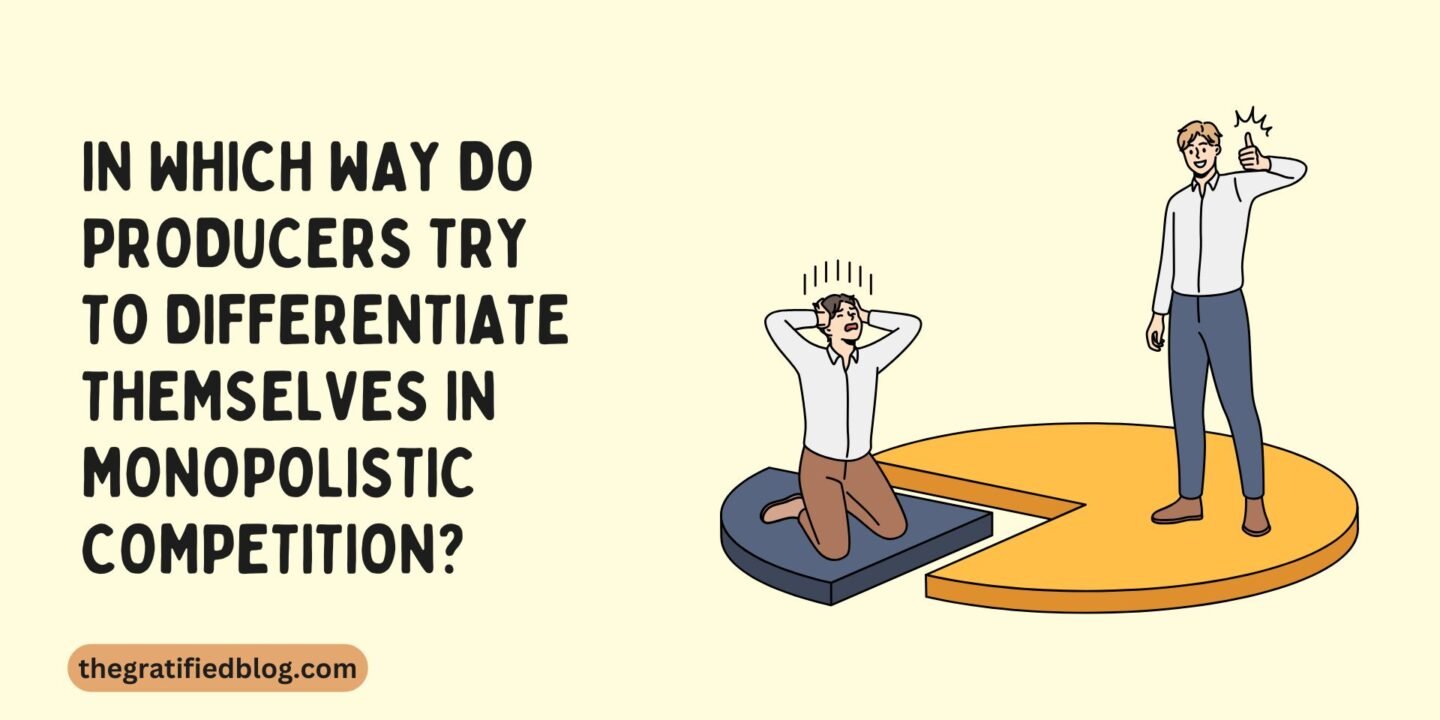
Imagine walking into a supermarket filled with different brands of cereal. They all look similar, but each has its own packaging, flavors, and marketing style. Some promise extra vitamins, some highlight a unique taste, and others focus on being budget-friendly. This is what happens in a market with monopolistic competition.
In monopolistic competition, many businesses sell similar products, but each tries to stand out in its own way. They do this because they want to attract more customers, increase sales, and stay ahead of competitors.
But how exactly do producers make their products different? In which way do producers try to differentiate themselves in monopolistic competition? They use strategies like unique branding, quality improvements, special promotions, and customer service enhancements. By doing so, they create a distinct identity that convinces consumers to choose their product over others. Let us explore these methods in more detail.
What Is Monopolistic Competition?
Before we dive into differentiation, let us first understand all about monopolistic competition:
Monopolistic competition is a market structure where multiple firms sell similar but slightly differentiated products. Unlike perfect competition, where all goods are identical, firms in monopolistic competition have some control over pricing due to product differentiation. However, they still face competition from other businesses offering close substitutes.
Characteristics of Monopolistic Competition
- Many Sellers and Buyers – Numerous firms compete, and consumers have multiple options to choose from.
- Product Differentiation – Products are not identical; they vary in branding, quality, packaging, or other factors that set them apart.
- Free Entry and Exit – Firms can enter or leave the market relatively easily, although brand loyalty may create barriers.
- Some Control Over Price – Due to product differentiation, firms have some power in setting prices but must consider competition.
- Non-Price Competition – Businesses focus on advertising, branding, and customer service rather than just lowering prices.
- Downward-Sloping Demand Curve – Unlike perfect competition, where firms are price takers, monopolistic competitors face a downward-sloping demand curve, meaning they can increase prices without losing all customers.
Examples of Monopolistic Competition
- Fast Food Chains – McDonald’s, Burger King, and Wendy’s sell similar products (burgers, fries, drinks) but differentiate through branding, menu variety, and promotions.
- Clothing Brands – Nike, Adidas, and Puma offer similar products but rely on branding, quality, and endorsements to create differentiation.
- Cosmetics Industry – Brands like Maybelline, MAC, and L’Oréal sell makeup products with slight differences in ingredients, packaging, and marketing.
- Hotels and Restaurants – Different restaurants offer variations in cuisine, ambiance, and service, even though they serve food.
- Retail Stores – Supermarkets and online retailers sell comparable products but use branding, store layouts, and customer experience to stand out.
Advantages of Monopolistic Competition
- Variety for Consumers – Buyers get access to multiple product options with different features and price points.
- Innovation and Quality – Firms strive to improve their products and services to attract customers.
- Better Customer Service – Since competition is high, businesses focus on customer satisfaction and experience.
Disadvantages of Monopolistic Competition
- Higher Prices – Due to brand value and differentiation, prices can be higher than in perfect competition.
- Inefficiency – Firms spend heavily on advertising and branding, which may not directly contribute to product quality.
- Excess Capacity – Companies might not operate at full efficiency since they are not price takers like in perfect competition.
Since many businesses offer similar products, they cannot simply rely on price to win customers. Instead, they use different strategies to stand out.
Why Differentiation Matters In Monopolistic Competition?
Differentiation is not just about making a product unique. It has several important benefits.
- Builds customer loyalty – People are more likely to stick with a brand they recognize and trust.
- Reduces price competition – If a product is special, customers may be willing to pay more for it.
- Increases sales – A unique selling point attracts more buyers and helps businesses grow.
- Enhances brand recognition – A distinct product or service makes it easier for customers to remember your brand.
- Creates competitive advantage – Businesses with strong differentiation have a better chance of outperforming their competitors in the market.
- Encourages customer engagement – Unique offerings spark interest, leading to more conversations and stronger connections with the audience.
Without differentiation, all products would seem the same, and businesses would struggle to stand out.
In Which Way Do Producers Try To Differentiate Themselves In Monopolistic Competition?
Businesses in monopolistic competition use many techniques to make their products unique. Let us look at some of the most common ways they do this.
1. Branding and Identity
Branding is one of the strongest ways to make a product different. A strong brand makes customers feel connected to a product. It can make people choose one product over another, even if they are very similar.
Businesses create a unique brand by focusing on:
- A catchy name and logo
- A memorable slogan
- Consistent colors and design
- A strong reputation
For example, think about soft drinks. Many brands sell cola, but Coca-Cola and Pepsi have strong branding that makes them stand out.
2. Quality and Features
Some businesses focus on offering better quality. A product that lasts longer, performs better, or has extra features can attract more buyers. Customers are often willing to pay more for a product that feels premium.
Ways businesses improve quality include:
- Using better materials
- Offering extra features that competitors do not have
- Testing products to make sure they are reliable
For example, smartphone companies compete by offering better cameras, stronger batteries, and faster performance.
3. Packaging and Design
The way a product looks can make a big difference. Attractive packaging can catch a customer’s eye and influence their decision.
Some ways businesses use packaging to stand out:
- Unique shapes or sizes
- Bright and attractive colors
- Sustainable or eco-friendly materials
- Clear and simple labeling
Think about chocolate bars. Many brands sell similar chocolate, but some have luxurious packaging that makes them feel more special.
4. Advertising and Marketing
How a product is advertised can set it apart from the competition. Good marketing creates an emotional connection with customers and builds trust.
Different advertising strategies include:
- TV commercials that tell a story
- Social media campaigns
- Influencer partnerships
- Discounts and promotional offers
For example, some perfume brands create stylish ads with celebrities to make their products feel high-class.
5. Customer Experience and Service
Great customer service makes people feel valued. When businesses offer friendly and helpful service, customers are more likely to return.
Ways businesses improve customer experience:
- Offering fast and easy returns
- Providing helpful support
- Training staff to be polite and knowledgeable
- Making the shopping process smooth
For example, some restaurants become popular because of their excellent customer service, even if the food is similar to competitors.
6. Customization Options
People love products that feel personal. Customization allows customers to choose features that match their needs.
Common ways businesses offer customization:
- Personalized messages on products
- Custom colors, sizes, or styles
- Special editions for different customer groups
For example, many sneaker brands allow customers to design their own shoes by selecting colors and patterns.
7. Pricing Strategies
Although businesses cannot compete only on price, they still use pricing to differentiate themselves.
Common pricing strategies include:
- Premium pricing for luxury products
- Discount pricing to attract budget-conscious buyers
- Bundling products together for better value
For example, some brands sell expensive watches as a status symbol, while others offer affordable models for everyday use.
8. Location and Availability
Sometimes, just being available in the right place at the right time makes a big difference. A store that is easy to access will attract more customers than one that is hard to find.
Ways businesses use location to their advantage:
- Opening stores in popular areas
- Offering online shopping with fast delivery
- Partnering with local shops
For example, coffee shops near offices attract busy workers, while those in shopping malls serve weekend shoppers.
9. Technology and Innovation
Staying ahead with new technology helps businesses stand out. Companies that introduce something fresh and exciting often attract more attention.
Ways businesses use technology:
- Offering smart features in everyday products
- Using AI to personalize customer experiences
- Improving delivery and shopping convenience
For example, some grocery stores let customers scan and pay using their phones, making shopping faster.
10. Social Responsibility and Ethics
People like to support brands that match their values. Many businesses highlight their efforts to help the environment or support social causes.
Ways businesses use social responsibility:
- Using eco-friendly materials
- Supporting charity projects
- Ensuring fair wages for workers
For example, some clothing brands promote themselves as environmentally friendly by using recycled materials.
Real-Life Examples Of Product Differentiation In Various Industries
Let us look at how different industries use differentiation to attract customers.
Food and Beverage Industry
- McDonalds vs. Burger King – Both sell fast food, but McDonalds focuses on speed and consistency, while Burger King highlights flame-grilled taste.
- Coca-Cola vs. Pepsi – Coca-Cola uses emotional branding, while Pepsi focuses on a younger audience and pop culture.
- Starbucks vs. Dunkin Donuts – Starbucks promotes premium coffee experiences, while Dunkin Donuts focuses on affordability and convenience.
Fashion and Apparel
- Nike vs. Adidas – Nike positions itself as innovative and performance-driven, while Adidas connects with street fashion and culture.
- H&M vs. Zara – H&M offers affordable fashion for the masses, while Zara focuses on fast-changing trendy designs.
- Levis vs. Wrangler – Levis markets itself as a classic denim brand, while Wrangler appeals to a rugged, outdoor audience.
Technology and Gadgets
- Apple vs. Samsung – Apple highlights simplicity and premium quality, while Samsung offers innovation and variety.
- Sony PlayStation vs. Xbox – PlayStation focuses on exclusive games, while Xbox promotes better online gaming experience.
- Dell vs. HP – Dell offers customization, while HP focuses on reliability and affordability.
Service-Based Businesses
- Uber vs. Lyft – Uber promotes global availability, while Lyft focuses on friendly and community-based branding.
- Netflix vs. Disney+ – Netflix offers a wide range of content, while Disney+ highlights family-friendly and exclusive Disney shows.
- Airbnb vs. Hotels – Airbnb offers unique travel experiences, while hotels focus on comfort and standardized services.
Challenges Of Differentiation
While differentiation is helpful, it is not always easy. Businesses face several challenges when trying to stand out.
1. High Costs
Improving quality, branding, and advertising all cost money. Small businesses may struggle to afford these investments.
2. Copycat Competitors
If a business creates a successful idea, competitors may quickly copy it. This means companies must keep innovating.
3. Changing Customer Preferences
What works today may not work tomorrow. Businesses must stay updated with what customers want.
4. Market Saturation
Many businesses compete in the same space, making it harder to stand out and gain customer attention.
5. Balancing Uniqueness with Demand
Businesses must differentiate without alienating customers by ensuring their unique features align with market needs and preferences.
Despite these challenges, differentiation remains one of the best ways to succeed in monopolistic competition.
Final Thoughts
In a market filled with similar products, standing out is key. Businesses use many strategies to make their products different, from branding and quality to customer service and innovation.
By focusing on unique features, businesses can attract loyal customers and stay ahead of the competition.
Next time you go shopping, look around. You will notice how every product tries to stand out in its own way. Whether it is a catchy ad, a stylish design, or a special feature, differentiation is everywhere.
So, which brands have won your attention? Let us know!
Frequently Asked Questions
Q1. In which way do producers try to differentiate themselves in monopolistic competition?
Ans. Producers in monopolistic competition differentiate themselves through product quality, branding, pricing strategies, customer service, and marketing efforts. They focus on creating unique features, packaging, or service experiences that distinguish their products from competitors, making them more appealing to specific customer segments.
Q2. How do monopolistic competitors differentiate their products?
Ans. Monopolistic competitors use branding, design, product quality, features, advertising, and customer service to stand out. They may offer loyalty programs, personalized experiences, or emphasize superior craftsmanship. This perceived uniqueness helps them build brand loyalty and justify premium pricing compared to similar products in the market.
Q3. How does monopolistic competition affect producers?
Ans. Monopolistic competition forces producers to invest in marketing, innovation, and customer engagement to stay competitive. It leads to lower profit margins due to competition but allows some pricing power if differentiation is effective. Producers must constantly evolve their offerings to maintain customer interest and market share.
Q4. What is one way in which monopolistic competition differs from perfect competition?
Ans. Unlike perfect competition, where products are identical, monopolistic competition involves product differentiation. In monopolistic competition, firms have some control over pricing due to perceived uniqueness, whereas in perfect competition, firms are price takers because all products are indistinguishable and freely available in the market.
Q5. What is monopoly? In what way does it differ from monopolistic competition?
Ans. A monopoly exists when a single company dominates a market with no competition, often due to legal barriers or high entry costs. Unlike monopolistic competition, where many firms offer differentiated products, a monopoly controls pricing, supply, and market access, leading to reduced consumer choice and potential price exploitation.



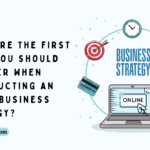
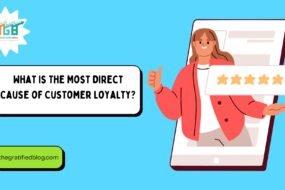
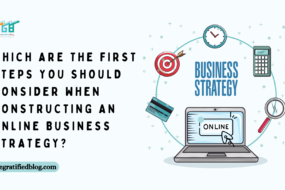

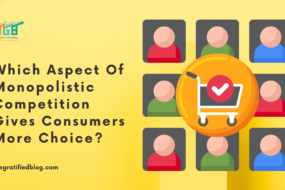
No Comments